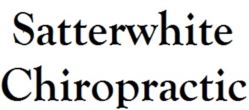Oxford Chiropractic Non-Surgical Relief for a Disc Herniation in the Neck
Guidelines are part of healthcare today. There are best-evidence guidelines for everything from how to manage psoriasis to heart disease to neck pain. There are best-evidence guidelines for most professions from allergy and immunology to urology. Chiropractic care is part of it all as is back pain and neck pain management. Such guidelines present a base for physicians like your Oxford chiropractor to practice and Oxford chiropractic patients to see that they are being treated with the best evidenced care. Healthcare guidelines keep evolving, and guidelines for neck pain due to cervical disc herniation point to an 8 to 12 week wait before surgical intervention which is just enough time for Oxford chiropractic care at Satterwhite Chiropractic to potentially prevent Oxford back surgery for many.
In Europe, national guidelines for the non-surgical care of new start neck pain or cervical radiculopathy (arm pain) are presented: Supervised exercise with manual therapy. Exercise and manual therapy before medicine for neck pain. Acupuncture for neck pain. Traction for cervical radiculopathy. NSAIDs (oral or topical) and tramadol after careful consideration for both neck pain and cervical radiculopathy. The guidelines also propose telling the patient about warning signs, prognosis and advice to be active along with treatment. (1) Good advice! Satterwhite Chiropractic is committed to Oxford chiropractic patient education. Satterwhite Chiropractic wants to be sure Oxford patients are familiar with their spinal condition, comprehend the treatment plan to relieve the pain, and embrace their role in achieving, keeping and holding onto the relief so that they do not have to suffer with arm pain or neck pain any longer than they have to or have to undergo Oxford neck surgery.
A study of Dutch neurosurgeons shows30 that 76.3% of them use the anterior cervical discectomy with fusion for cervical spine disc herniation surgeries. This requires them to reach the cervical spine via the front of the neck, not the back. This surgical approach brings with it a higher risk for complications than a straightforward anterior cervical discectomy, but the surgeons think it to be more effective for arm pain relief. Considering the risk, luckily, the surgeons seek a minimum of 8 to 12 weeks of radicular arm pain in a patient before they operate. (2) That allows Oxford chiropractic care just enough time to reduce Oxford neck pain.
In 8 weeks, Oxford chiropractic care at Satterwhite Chiropractic with Cox Technic can do wonders! In a retrospective review of 39 patients treated with Cox Technic protocols for cervical spine in patients with cervical radiculopathy (arm pain), 13.2 treatments was the mean number of treatments to deliver arm pain relief. (3) In 10 weeks, Cox Technic produces a favorable clinical outcome that lasts! A 2 year follow up with a patient who had a C6-7 cervical disc herniation with radiculopathy arm pain revealed that subjective and objective signs or relief were stable. (4) In conservative medicine, 83% patients with symptomatic cervical spine disc herniation with radiculopathy find relief in about 24 to 36 months with the most progress toward pain relief happening in the first 4 to 6 months. (5) [companyname]] embraces the challenge of Oxford neck pain with radiculopathy with this knowledge and confidently approaches neck pain and arm pain due to cervical disc herniation with pain relief as the end result. The Oxford treatment plan for cervical spine pain is ready for you!
Schedule a Oxford chiropractic appointment today at Satterwhite Chiropractic for neck pain and arm pain evaluation and Oxford neck pain relieving non-surgical chiropractic treatment.

